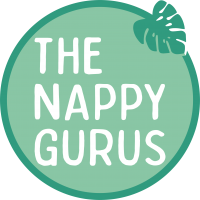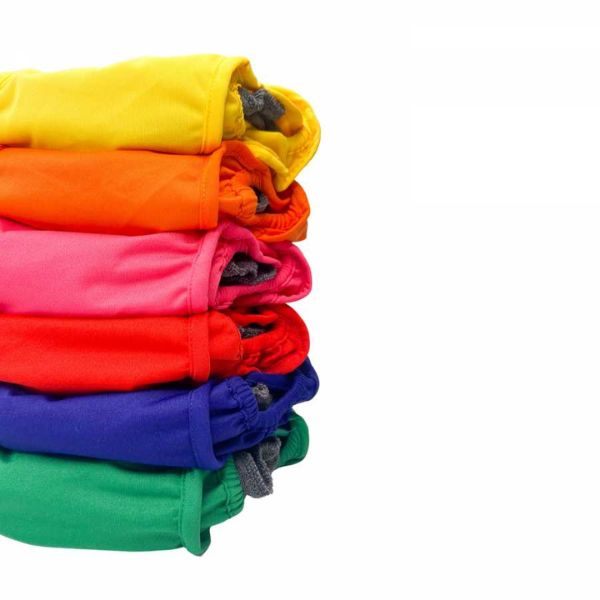Everything You Need to Know About Dry Pailing Cloth Nappies
If you are already using cloth nappies, you’ve probably come across the term “dry pailing.” Dry pailing is currently the most popular methods for storing dirty cloth nappies before washing.
Instead of soaking in a bucket of water, dry pailing lets you store reusable nappies dry after removing solids and rinsing, reducing odours and avoiding buckets of poopy water.
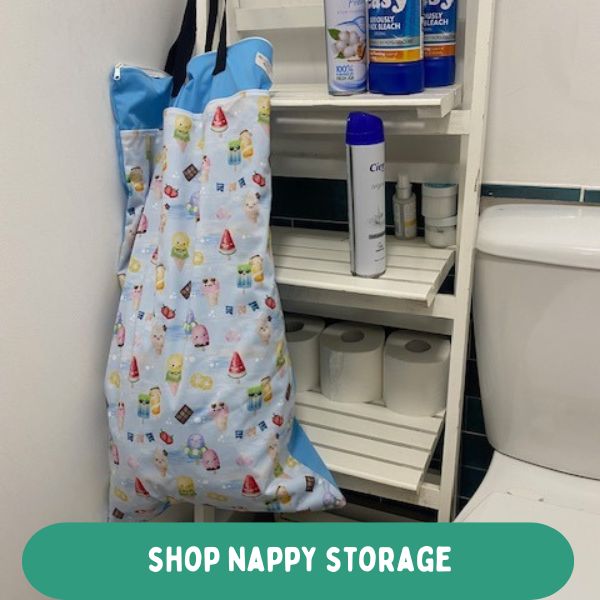
What Is Dry Pailing?
Dry pailing is a method of storing used washable nappies in a dry container without any water until you are ready to wash them. This method is popular among cloth nappy users because:
- it reduces moisture in the storage container
- it lowers the chance of bacterial growth, mould, or unpleasant smells
- It prevents any ammonia from urine leaching out and covering all of the fabrics leading to balding
- it prevents bacteria from soiled nappies mixing with the water and eating into the nappies fabric
Choosing the right container can make a big difference; for example, a bucket with a lid keeps odours contained, while a well-ventilated basket can help reduce any damp smell and allows air flow preventing odour build up.
Dry vs. Wet Pailing Nappies
While dry pailing keeps nappies in a dry, ventilated space, wet pailing involves soaking the nappies in a bucket of water before washing. Here’s a quick comparison of the two:
Odour Control
Dry pailing often produces fewer smells as the modern cloth nappies aren’t left to soak in stagnant water, which can breed bacteria and amplify smells.
Mould Prevention
Dry pailing eliminates the standing water where mould and mildew can grow, making it a safer choice for storage.
Water Conservation
Dry pailing uses less water.
Because of these advantages, dry pailing has become the preferred storage method for cloth nappies, as it’s generally safer, cleaner, and simpler than wet pailing. It is less messy, and removes the risk of baby getting into the nappy water for a play!
Is Dry Pailing Safe?
Yes, dry pailing is safe. By keeping nappies dry until wash day, you’re preserving their quality and extending their lifespan.
How to Dry Pail Cloth Nappies
What You Need
To start dry pailing, you’ll need to choose your storage:
Bucket or pail
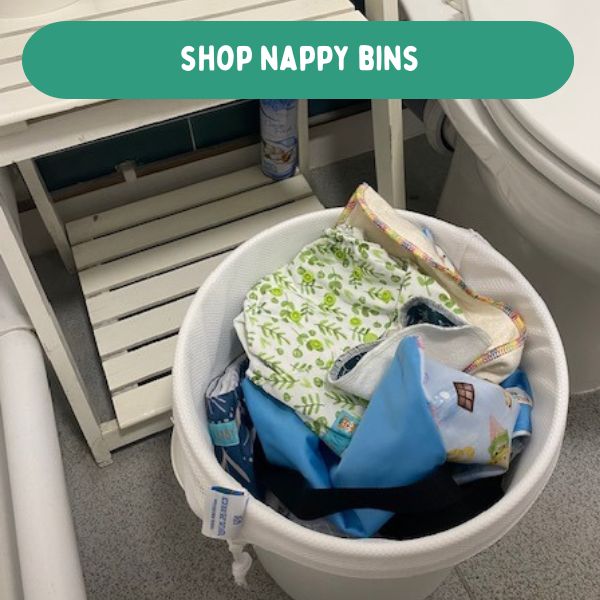
This is the most traditional of the three storage types. A bucket with a lid that can be kept closed for sealed storage or left off for airy storage. Line it with a mesh bag or nappy pail liner for an easy transfer to the washing machine.
Large wetbag
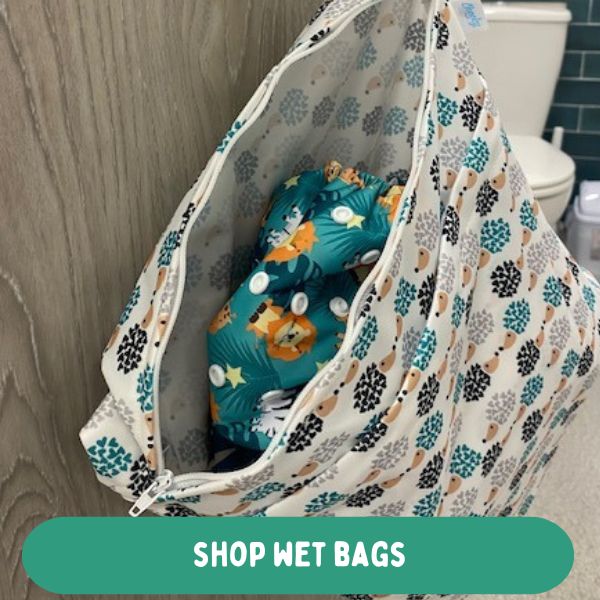
A large waterproof bag with a zip at the top to drop used nappies in, keep the zip closed for sealed storage, and open for airy storage. On wash day throw the whole bag into the wash unzipped and the nappies will make their way out.
I used to have two large wetbags hanging on our toilet doors upstairs and downstairs.
Airy laundry basket or Strucket
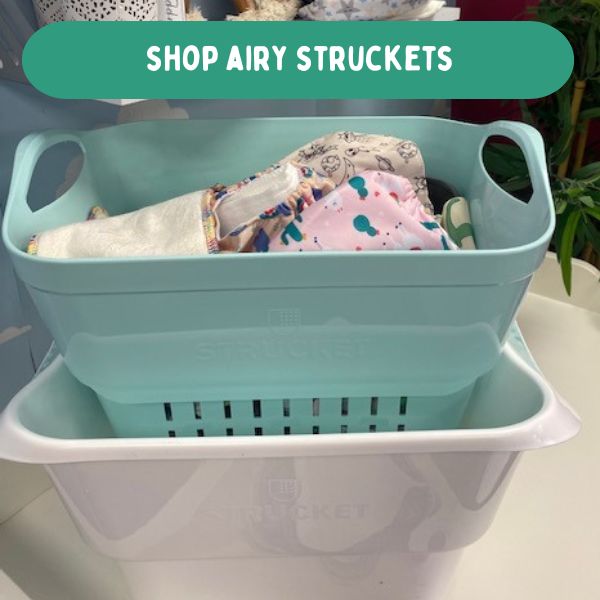
This is the most up to date practise, as allowing air to circulate around the nappies prevents any smells building up. Keep the laundry basket in a cool place out of the sun, many people have them on a shelf or drilled to the wall in a utility room or toilet near the washing machine.
Other items to help with reusable nappy storage:
- A mesh liner or laundry bag for easy transfer to the washing machine
- Essential oils to help with odour control - just add a few drops to a cheeky wipe and leave in with the nappies
- A small spray bottle with water or nappy-safe stain remover for any stubborn marks
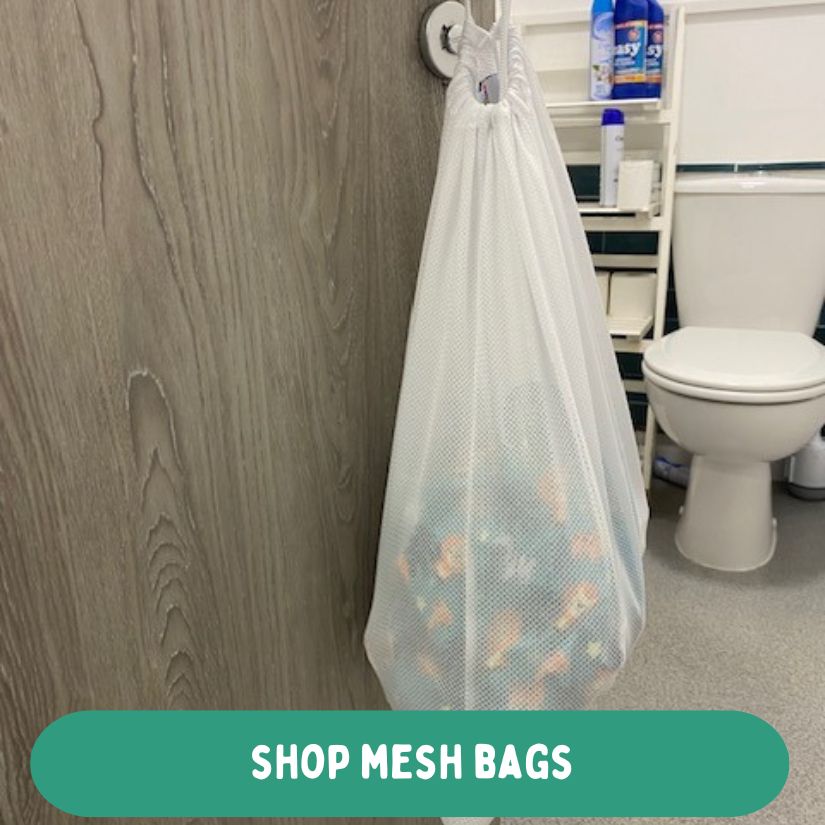
How to Prepare Nappies
Before placing nappies in the dry pail, remove any solids from the nappy. Fleece nappy liners can make this process easier if your nappies don't have a stay dry layer.
If needed, give the nappy a quick rinse if there is any residue. Pre-weaning breast or formula milk poo is water soluble so they can be put straight in the wash. This makes many people squeamish though so rinse if you prefer or if you aren't washing them that day.
Once baby is established on solids you should be able to drop most poos off the fleece liner or nappy with minimal mess.
For best results, separate the absorbent inserts or boosters from the reusable nappy shell. This helps air to circulate and makes washing more effective later.
Best Pailing Practices
To make the most of dry pailing, consider these tips:
- Avoid Overcrowding: Don’t overfill the pail, as overcrowding can trap odours and make the nappies harder to clean.
- Rinse daily: This doesn't need much effort, when you first take the night time nappy off add everything from the previous day to the machine, run a rinse then add back to the storage to await a full wash.
- Wash Regularly: Wash the contents of your dry pail every 3-4 days to prevent odour and bacteria buildup.
- Use Odour Control Products: Place a few drops of essential oils on a Cheeky Wipe in with the nappies to help keep things fresh.
Where Should I Put My Dry Pail?
It’s best to keep your dirty reusable nappies in a well-ventilated area. Good spots include the laundry room, bathroom, or a designated space in the nursery that has air circulation. Ventilation helps prevent any odour from becoming too concentrated and makes it easier to manage smells between washes.
Keep them up high where babies and little ones can't get hold of them.
Does Dry Pailing Smell?
Dry pailing shouldn’t cause unmanageable smells.No standing water, and proper ventilation helps keep things fresh. Rinsing nappies daily washes removes any leftover residue and flushes away urine. If you don't want to do this daily, run a rinse before your main wash.
Does Dry Pailing Cause Staining?
Staining can sometimes occur with dry pailing if nappies are stored with solids still on them just as they would with any storage method. To avoid this, make sure to remove any solids before placing nappies in the pail. Rinsing the nappy briefly can help, especially with newborns or if you notice any stubborn stains.
Conclusion
Dry pailing is a safe, effective, and convenient way to store cloth nappies before washing. With the right setup and routine, you can keep odours to a minimum and prevent staining while making cloth diapering an easy part of your daily routine.
You can contact us directly for advice, the team chat pee, poo and periods all day long and are happy to help! We’d also love to hear your experiences or answer any questions in the comments!
You can read more of our blogs for helpful tips and guides:
Whats the difference between nappy inserts and boosters?
Do biodegradable nappies actually exist?
About the Author: Kirstin on our customer services team loves spending her days helping customers with their reusable period product needs and advising cloth nappy using families. Kirstin lives with her three teenagers and loves walking, cycling and sea swimming year round in our beautiful bay.She is excited to share her extensive knowledge and enthusiasm for all things reusable, helping a new generation of parents navigate eco-friendly choices for their children.
